Abstract
The temperature dependence of the oscillatory behavior of experimental and computed axons was compared. In the experimental study of space-clamped giant axons of the squid, small oscillations after a single threshold spike were measured using the double glucose gap over the temperature range 10°-30°C during treatment with three concentrations of external CaCl2 solutions. Calcium concentration had little effect on frequency, as was found also by Huxley in his computations at 18.5°C for a fiber at rest. The Q10 both for the experimental and for the computed axon of FitzHugh was 2.25. The experimental measurements of the frequency of oscillations near threshold agree extremely well with the Hodgkin-Huxley calculations.
Full text
PDF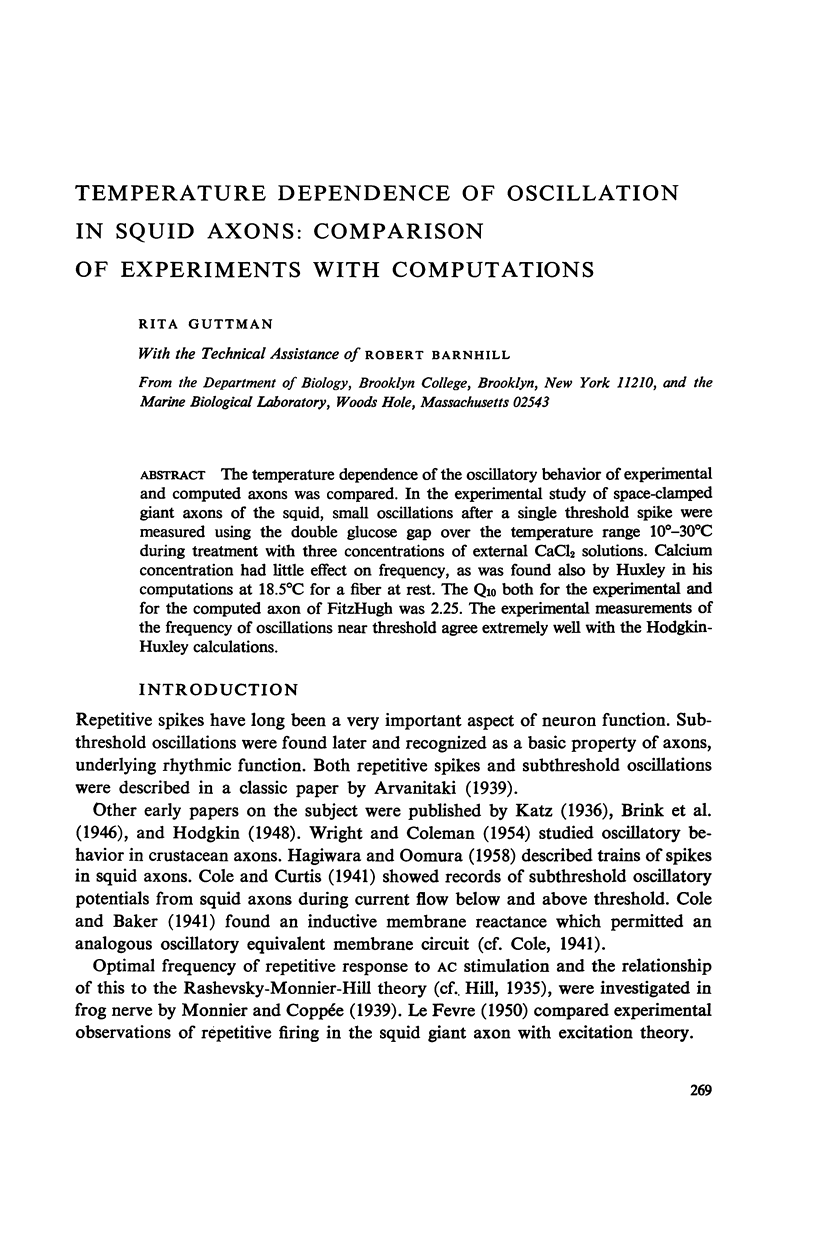
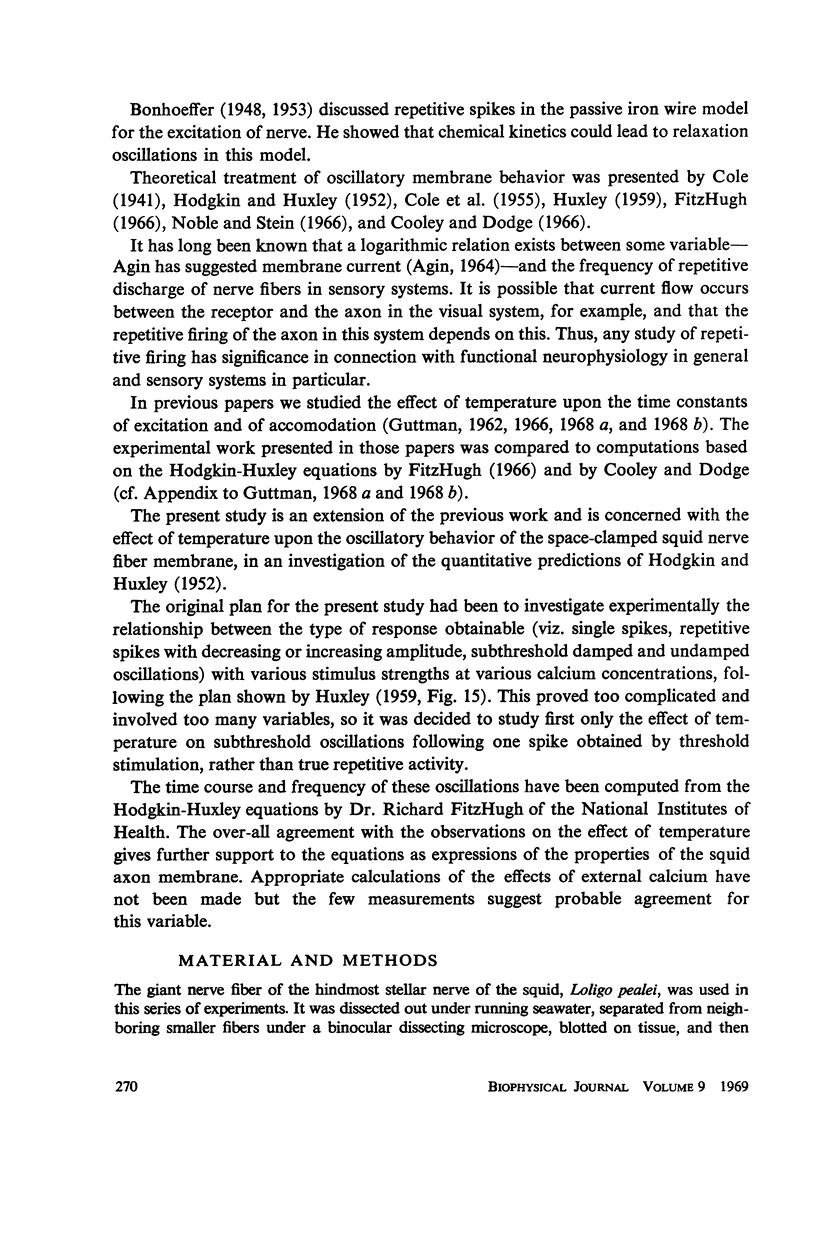
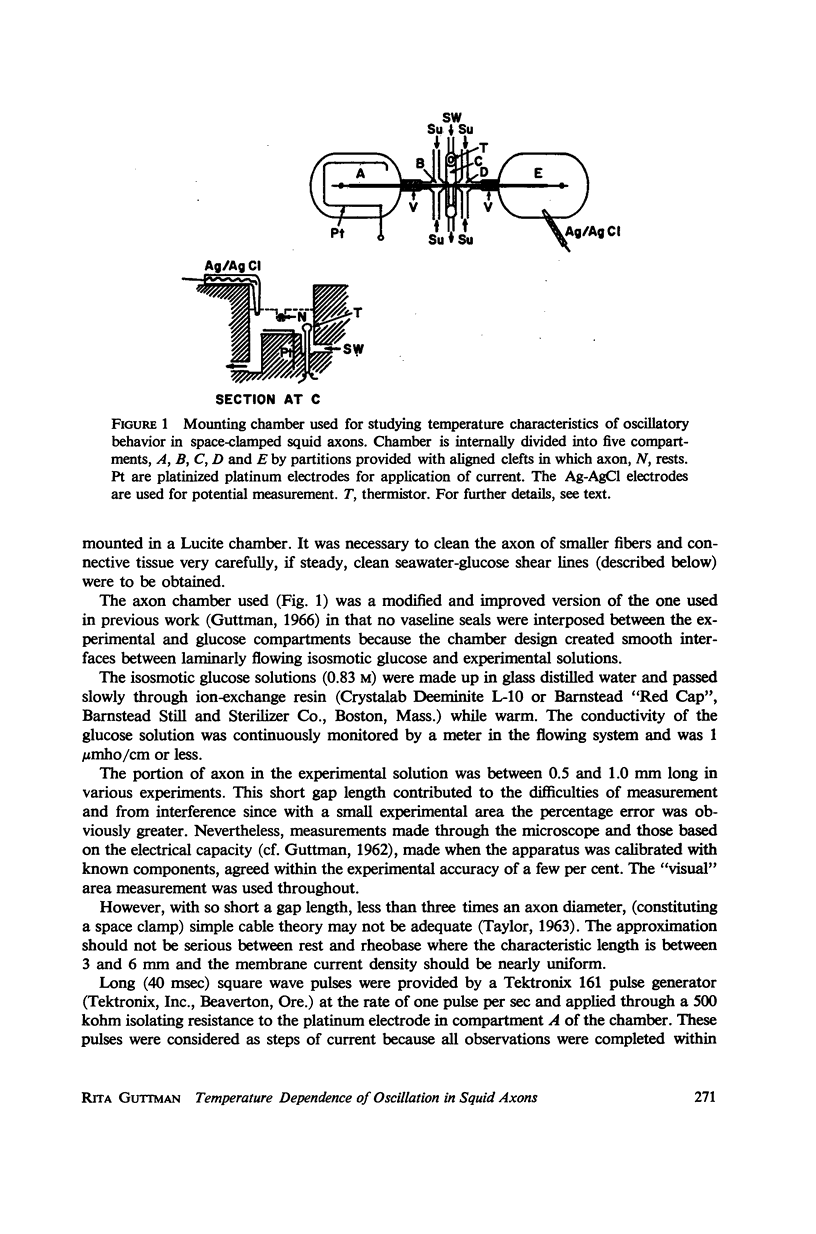
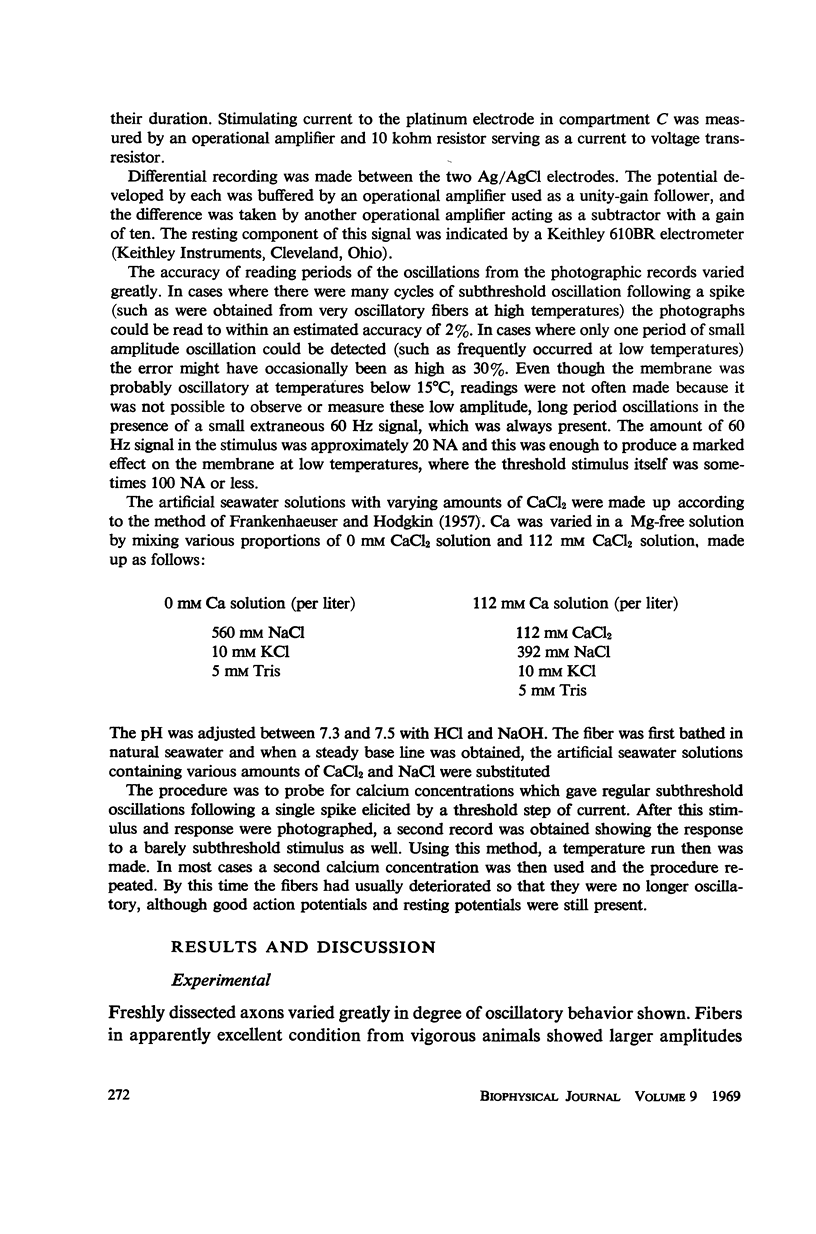

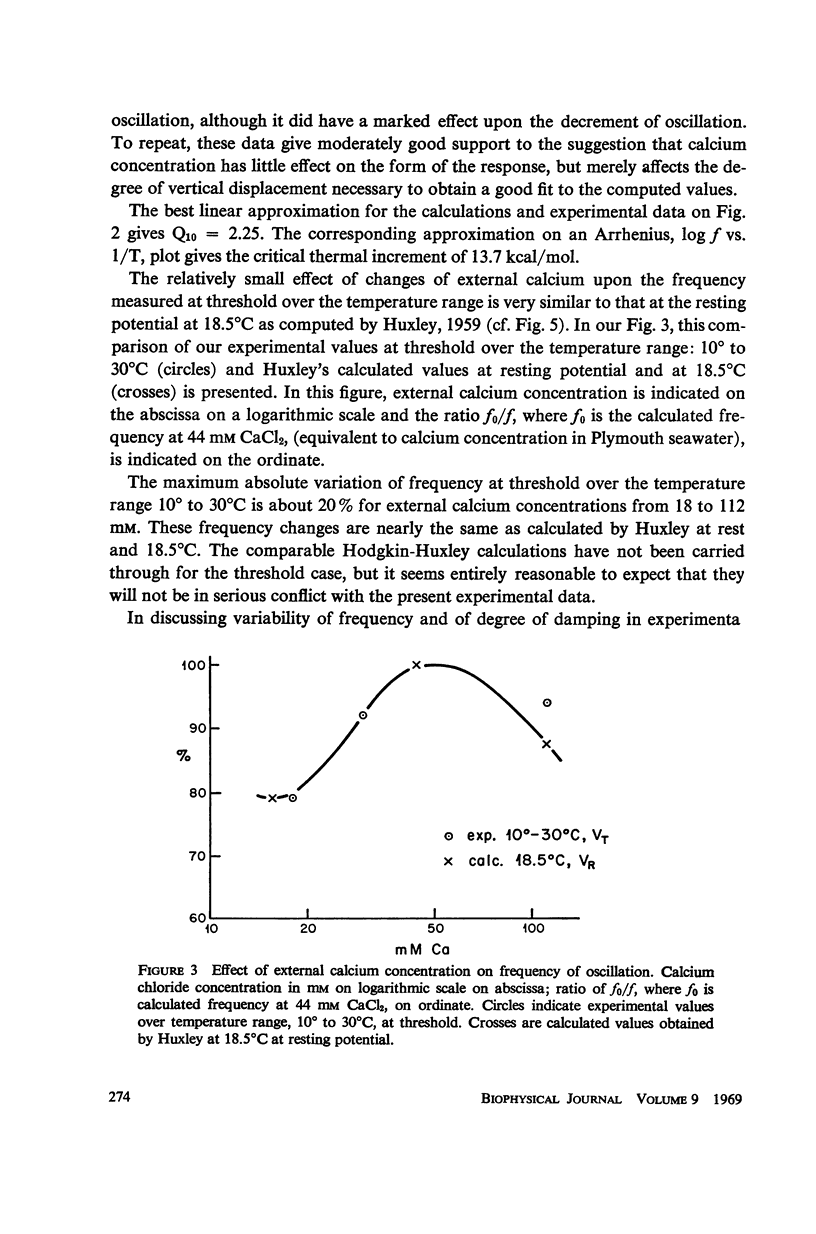
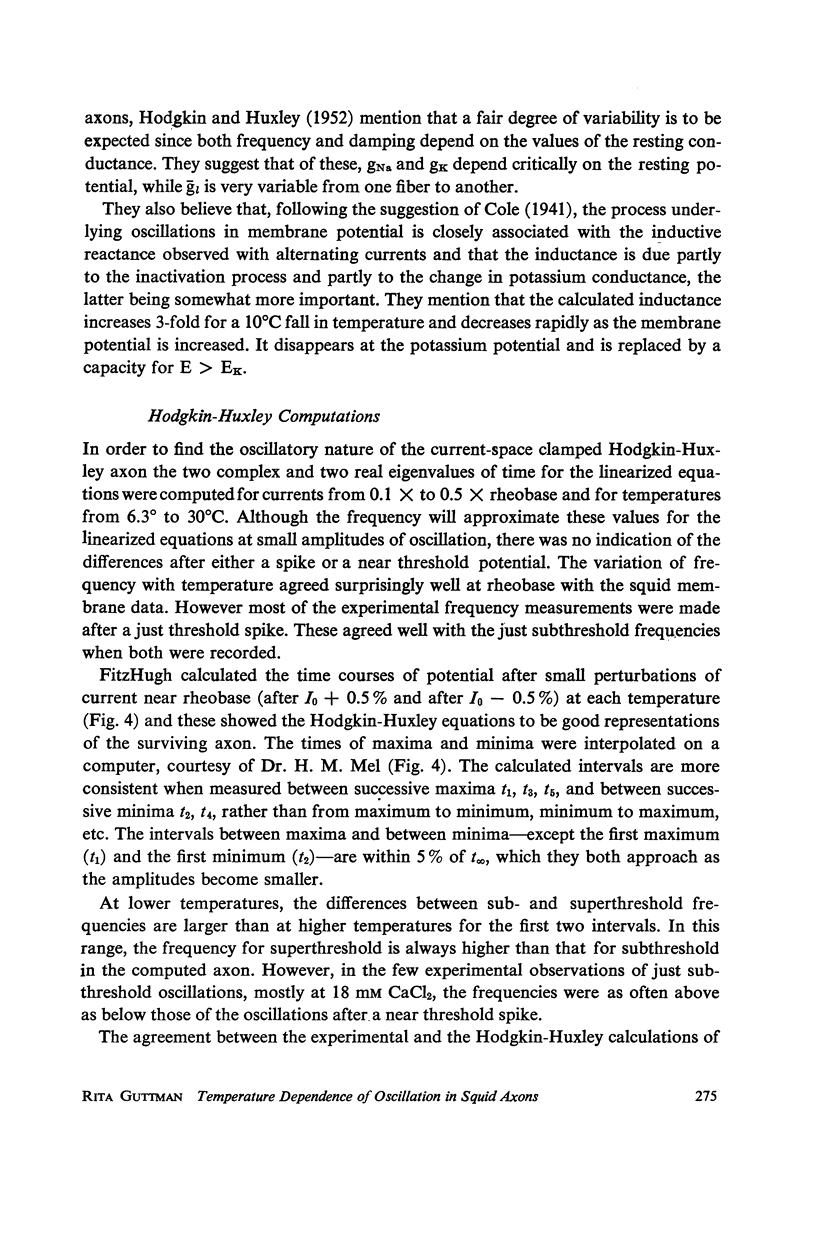
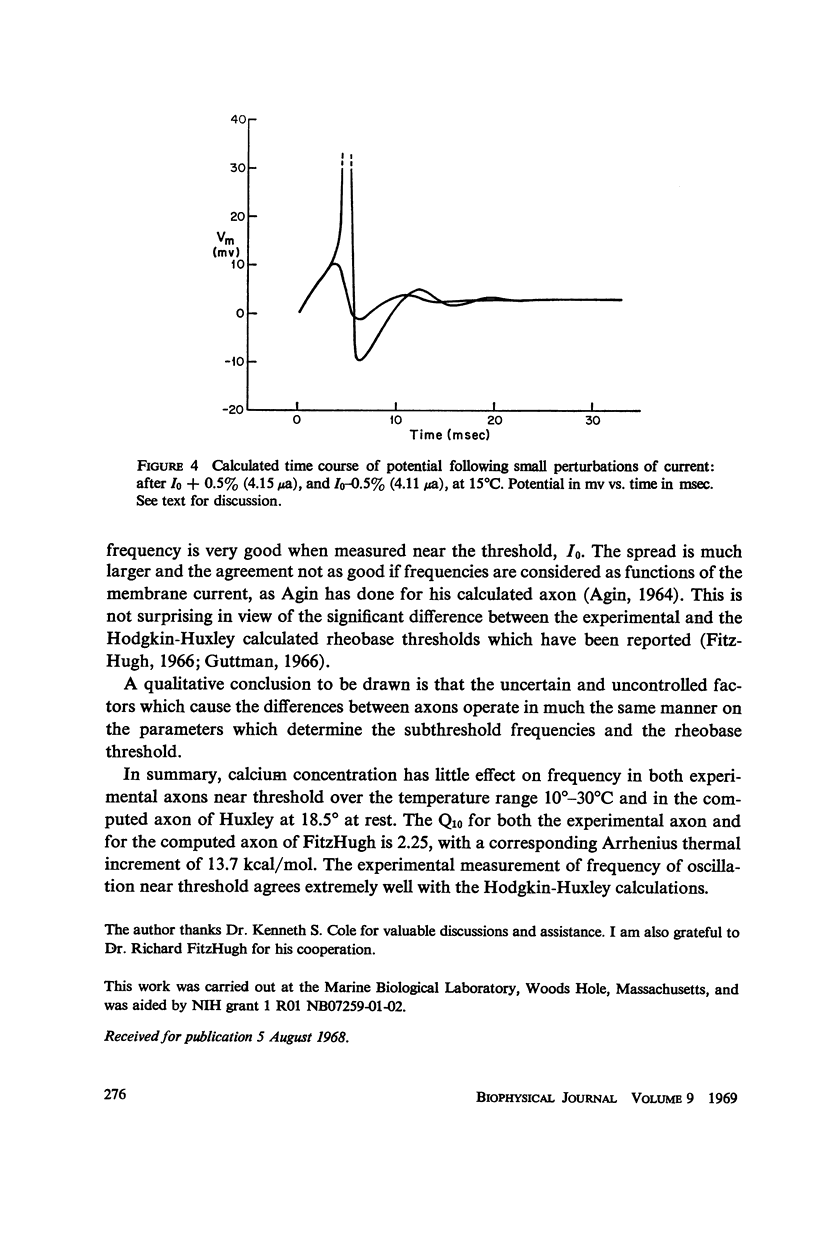
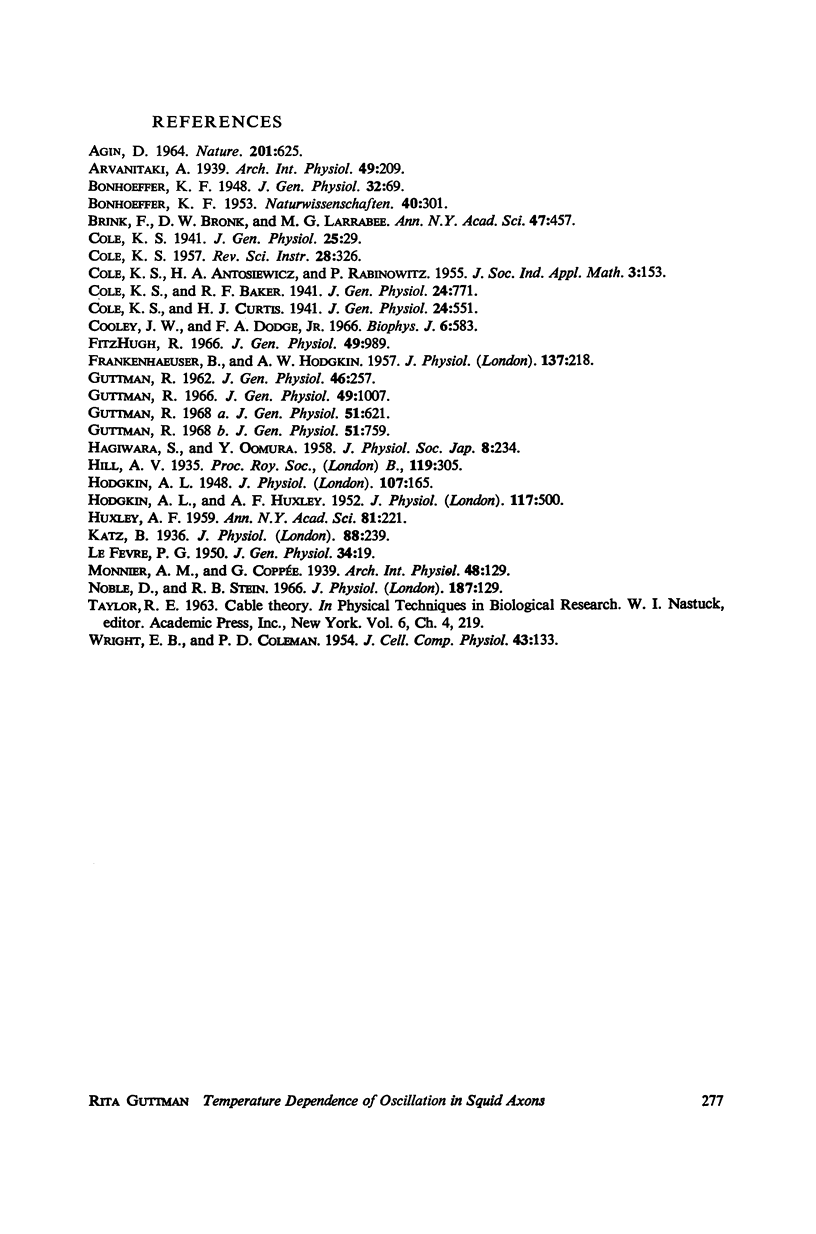
Selected References
These references are in PubMed. This may not be the complete list of references from this article.
- AGIN D. HODGKIN-HUXLEY EQUATIONS: LOGARITHMIC RELATION BETWEEN MEMBRANE CURRENT AND FREQUENCY OF REPETITIVE ACTIVITY. Nature. 1964 Feb 8;201:625–626. doi: 10.1038/201625a0. [DOI] [PubMed] [Google Scholar]
- Cooley J. W., Dodge F. A., Jr Digital computer solutions for excitation and propagation of the nerve impulse. Biophys J. 1966 Sep;6(5):583–599. doi: 10.1016/S0006-3495(66)86679-1. [DOI] [PMC free article] [PubMed] [Google Scholar]
- FRANKENHAEUSER B., HODGKIN A. L. The action of calcium on the electrical properties of squid axons. J Physiol. 1957 Jul 11;137(2):218–244. doi: 10.1113/jphysiol.1957.sp005808. [DOI] [PMC free article] [PubMed] [Google Scholar]
- Fitzhugh R. Theoretical effect of temperature on threshold in the Hodgkin-Huxley nerve model. J Gen Physiol. 1966 May;49(5):989–1005. doi: 10.1085/jgp.49.5.989. [DOI] [PMC free article] [PubMed] [Google Scholar]
- HAGIWARA S., OOMURA Y. The critical depolarization for the spike in the squid giant axon. Jpn J Physiol. 1958 Sep 15;8(3):234–245. doi: 10.2170/jjphysiol.8.234. [DOI] [PubMed] [Google Scholar]
- HODGKIN A. L., HUXLEY A. F. A quantitative description of membrane current and its application to conduction and excitation in nerve. J Physiol. 1952 Aug;117(4):500–544. doi: 10.1113/jphysiol.1952.sp004764. [DOI] [PMC free article] [PubMed] [Google Scholar]
- Hodgkin A. L. The local electric changes associated with repetitive action in a non-medullated axon. J Physiol. 1948 Mar 15;107(2):165–181. doi: 10.1113/jphysiol.1948.sp004260. [DOI] [PMC free article] [PubMed] [Google Scholar]
- Katz B. Multiple response to constant current in frog's medullated nerve. J Physiol. 1936 Nov 6;88(2):239–255. doi: 10.1113/jphysiol.1936.sp003435. [DOI] [PMC free article] [PubMed] [Google Scholar]
- Noble D., Stein R. B. The threshold conditions for initiation of action potentials by excitable cells. J Physiol. 1966 Nov;187(1):129–162. doi: 10.1113/jphysiol.1966.sp008079. [DOI] [PMC free article] [PubMed] [Google Scholar]
- WRIGHT E. B., COLEMAN P. D. Excitation and conduction in crustacean single motor axons. J Cell Physiol. 1954 Apr;43(2):133–164. doi: 10.1002/jcp.1030430203. [DOI] [PubMed] [Google Scholar]


